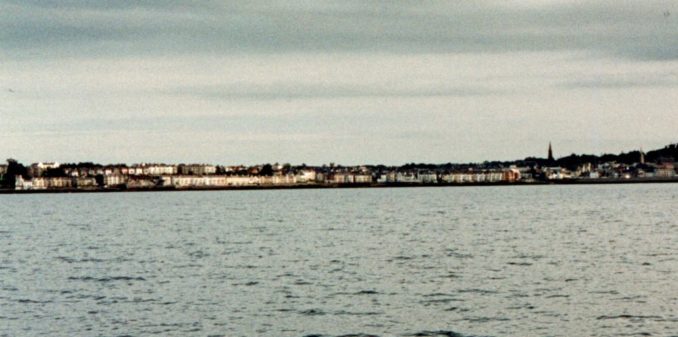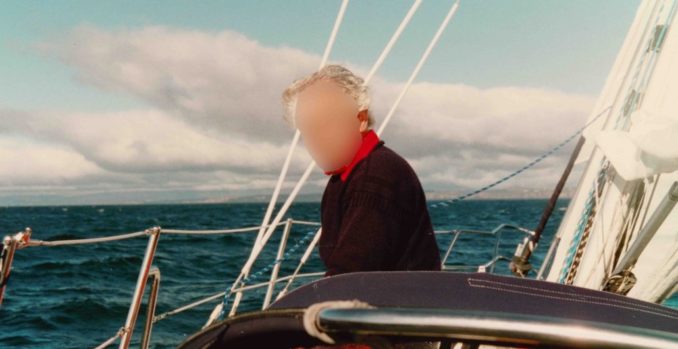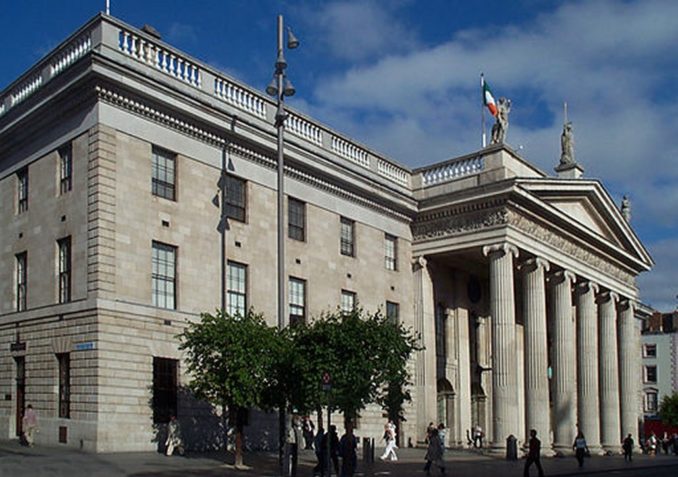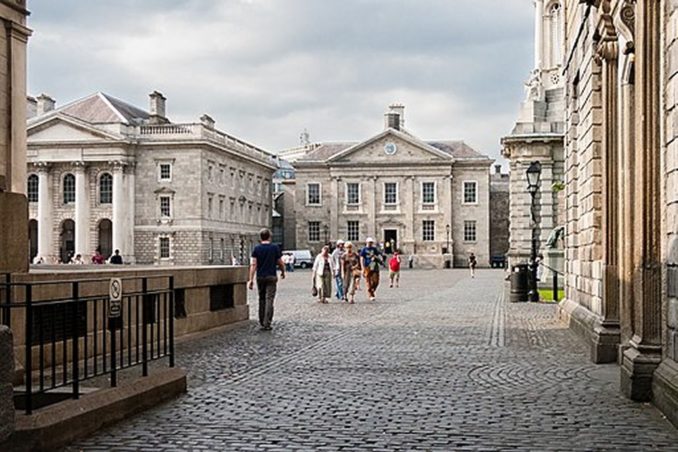RESPONSES
Once again I thank all who read and commented on Part 33 describing my 1997 passage from South West Scotland to Northern Ireland and especially DJM who has shown consistent enthusiasm for this series and may even have commented on all 33 articles.
He certainly seems to have had a wild time both sailing up the River Avon to Bristol and in the bar afterwards.
His story stimulated me to do a little more research because I was born in Bristol but evacuated when three years old as my parents moved to the Somerset Countryside to get away from German visitors in the sky and the bombs they started dropping.
The Luftwaffe had two good reasons for doing that. Bristol had long been one of England’s premier ports and blockading Britain to limit imported food and other supplies was one objective.
Additionally Sir George White had seen the potential for aviation after meeting Wilbur Wright in 1909 and set up an aircraft factory on the outskirts of the city at Filton in February the following year. By 1939, the Bristol Aircraft Company was ” … the largest single aircraft manufacturing unit in the world ….” and that too made the city a prime war target.
My parents’ prudence secured our safety because we remained alive and well throughout the war. All I remember of those early years was the excitement in our village when a German airman was seen parachuting to the ground after bailing out from his ‘plane damaged by ‘ack-ack’ fire. To my mother’s everlasting sorrow two of her brothers who stayed in the city were killed during German raids but I was too young to be as badly affected as she was.
We moved after the war to Weston-s-Mare so I never did become familiar with Bristol’s detailed geography and certainly never sailed there, or in the Severn Estuary, when young or 50-60 years later.
My guess at the location of DJM’s sailing adventure was just that, based solely on his photograph, my own understanding of sailing issues developed after retiring, and very distant memories of being taken past the Clifton Suspension Bridge to see “Guy” the Gorilla and “Rosie” the Elephant in Bristol Zoo on Clifton Downs.
However, I did wonder how the unwieldy sailing ships of earlier centuries had managed the same difficulties DJM encountered. I discovered an answer on the site I found helpful when describing conditions in the Pentland Firth – visitmyharbour.com. The author explains the flooding and ebbing tides provided the motive forces but directional control was achieved by “Tugs” of the day in the form of “Hobblers” rowed by up to 6 men.
The same site records that once near the city the sailing ships of yore would be allowed to settle in the mud on the river banks to be unloaded and loaded in that position before being floated off when ready to be guided downstream in the same way.
Unsurprisingly the ships had to be built strongly and kept tidy to cope with these operations and apparently that is the origin of the phrase – “All Shipshape and Bristol Fashion”
THE 1997 VOYAGE
That segues neatly into my first remark about the next leg of this voyage when we called at Kilkeel about 50 miles south of Bangor though a bit farther when sailing down the coast via the Irish Sea.
Quoting again from my original journal –
The severity of easterly storms along this coast can be judged by the entrance to the harbour. I have never before been through such a long, narrow and twisting chicane of dredged and walled channel obviously designed to keep out breakers and swell.
We emerged into quite a large basin with many fishing vessels and depths at its outer end of 4 metres. Tying up at a quay near the entrance we planned to set off to find the harbourmaster who, according to the almanac, is at work between 9 in the morning and 8 in the evening.
We were told otherwise by a couple of men in a car who had stopped to look at the yacht and pointed out a very definitely shut Harbourmaster’s Office. Our informants told us yachts usually sat in the mud at the head of the basin.
As owner of a 15-month-old brand-new yacht that had cost the sale proceeds of a 4 bedroom house in Northumberland, and worrying about the risk of discarded prams, shopping trolleys etc, I decided not to follow that advice and we passed the night rafted up against a large fishing vessel.
We took the precaution of leaving some slack in our mooring lines and tying one between the two craft half-way up Alchemi’s mast in case either or both settled in the mud and there was a need to avoid breakage or rolling over because of relative movement between them.
I need to back up a bit to explain that John joined me in Bangor without any problems on Saturday evening and I was very pleased that he did. I had learned a lot when single-handing for the first time from Portree to Bangor at this time of year but had no urge to continue the experience. (I succeeded in recruiting crew for the next 5 years until reaching Panama after a couple of poor experiences as distance from the UK increased and recruiting crew for the longer periods necessary in the Pacific became too difficult except when I was joined on two or three occasions by personal friends from my earlier life.)
I forget how John and I first contacted one another but I remember he was much more experienced and qualified than I was myself and held an RYA Ocean Yacht Master certificate. He may also have been a Yachtmaster Instructor because I remember he skippered Civil Service Club outings off the south coast.
He didn’t push those facts in my face though and quickly adopted the method and routines for sailing Alchemi I had by then evolved, as I benefited from discussions with him about sailing generally and Navigation with a sextant. The latter skill was still required at the time by the RYA for Ocean qualification as GPS systems were still in their infancy and regarded as being at risk of being switched off for military reasons.
Here is a map of the route John and I followed for the last leg of the 1997 voyage.

We set off on Sunday from the excellent marina at Bangor in bright but cloudy weather. I didn’t get the camera out soon enough to take a good photo of the seafront with its row of stately Victorian Hotels and the best I can do by way of illustration is to reproduce this very highly processed image of a rather distant shot (I’m sure there are better pics available on the internet but I prefer to use my own wherever possible) –

The normal route for yachts is down the Donaghadee Sound between the mainland and the Copeland Islands. But the day we were there the light breeze was just south of east and we decided it would be best to sail outside the islands to avoid the need to tack. That tactic worked well and an easy sail took us offshore Ballyhalbert Bay by 4 in the afternoon.
Neither the Almanac nor the CA Pilot Book we were using mentions an anchorage here but there was one shown on the chart. Conditions seemed so benign and settled we decided to stay there overnight. There was a slight swell but nothing to worry about though the anchorage would be untenable in medium to strong winds from the north-east.
Monday saw us reach Kilkeel and Tuesday provided a glorious sail in a 15 knot breeze over an almost calm sea.

We hoped to stay overnight at Howth marina at the northern end of Dublin Bay but were told by VHF they were choc-a-bloc with yachts attending a regatta.
After crossing Dublin Bay we entered the large and busy Dun Laoghoire harbour and cruised up and down looking for a place to stay. That was a discouraging experience.
Very nearly all the moorings were occupied, fishing boats preparing for departure obviously wouldn’t have welcomed a yacht occupying their places upon returning in the morning with a night’s catch, and neither the National nor the Royal George Yacht Clubs answered our VHF calls.
As a final effort we made slowly and cautiously up a row of densely packed yachts of our size, into another one of small racing boats and dinghies towards an unmarked large white building.
I needn’t have worried about depth though – there was plenty of water right up to a pontoon where we were met by the boatman of The Royal Irish Yacht Club who assured us that members welcomed visiting yachtsmen and it would be quite in order for us to remain moored where we were for two nights!
The welcome and generosity of the Royal Irish was outstanding and David Anderson, a past Commodore of the Club, was particularly friendly and helpful in many ways. We learned from him the “Royal” title derives from Victoria and Albert with present members having no difficulty at all in retaining the title at the same time as being fervent republicans. He also suggested we ask the club secretary to photo-copy for us several pages of the Club’s Irish Coast Pilot Book covering the features and harbours down to Kinsale.
The following morning we replenished supplies from local shops and in the afternoon decided to visit Dublin by suburban train.
The centre of Dublin seemed overwhelmingly busy, noisy and dirty after so long spent away from large towns and cities. It was though interesting to walk along O’Connell Street to see the General Post Office – the main stronghold of the Irish Volunteers during their 1916 Rising whose successors formed the IRA three years later.

A stroll along the prosperous and fashionable shopping streets south of the Liffey was interesting too. But, for me, the highlights of the expedition were visiting St Stephen’s Green and walking past Trinity College, both havens of peace and calm after the noise and bustle outside.


We mentioned those preferences to David Anderson when enjoying a pint of Kilkenny with him in the yacht club bar that evening. I wish I could have sketched his expression as he told us with a straight face and a neutral tone in a Southern Irish accent –
“Ah, yes, the Green was presented to the people of Dublin by the Guiness family. The family have done a lot for the people of Dublin – but then, the people of Dublin have done a lot for the Guiness family.”
A CHANGE OF APPROACH – AN EARLY NOTICE
I started this series for two reasons. Firstly, I admired the articles on GP and wanted to support the site in a non-financial way.
Secondly, my own blog and other publications describe my sailing life pretty fully for the years between 2001 and 2015 but I had only covered the first and second years by submission of my original logs to the Cruising Association’s competitions and the third and fourth only in my original journals available to family members but rarely consulted.
I thought learning to sail and buying a yacht in 1995/6 and using it in 1997 in the way I’ve described constituted a major change of lifestyle late in life that others might find interesting.
I have now nearly finished this account of my first full year ‘s experience, with digressions on later years and the history of piracy and colonialism in three regions of the world. One more article will complete what I originally set out to do that will have taken 35 articles over a 70-week period.
I don’t want to continue as a matter of habit until it becomes a chore rather than a pleasure and now feel the need for a change that could be either an end of my efforts before they become stale and repetitive, or just a change of pace.
I feel ambivalent about which way to go and could be influenced by the views of readers whom I wouldn’t want to disappoint if there are enough who would like to see further articles that would appear, SB willing, at irregular intervals. But neither would I want to labour away at writing, editing and proof-reading stuff that few were inclined to read. To help consideration of that I describe below what a second series might contain.
At the end of 1997 I was still undecided about the type of sailing I wanted to do in following years.
I had very much enjoyed this cruise both for the activity itself and because it made possible unhurried visits to places I’d never have seen in any other way. All I could think about the future was that I didn’t want to commit myself mentally or to others about my longer term intentions. But, I did want to keep open the possibility of visiting even more distant places in the same way and to do that decided I needed to sail farther offshore and into the Atlantic Ocean.
Accordingly, I planned a Voyage of that type for 1998. That entailed crossing the Bay of Biscay, sailing down the Atlantic coasts of Northern Spain and Portugal to Lisbon, then going offshore to the Azores Islands and returning to Falmouth via the West Coast of Ireland from Galway to Kinsale.
I again submitted a copy of my log to the Cruising Association’s competition and again it failed to be placed. But the Librarian thought it sufficiently informative to be included in an adapted form with three others in a series he had persuaded Adlard Coles to publish. The series didn’t sell well enough for them to produce a second edition and the first is now long out of print.
The combined effect of those two years convinced me that I was by then sufficiently experienced to visit the Caribbean which I did in 1999 starting off with again going down the Spanish and Portuguese Coasts, this time as far as Cadiz. and then going offshore to Madeira and the Canary Islands and across the Atlantic to Guadeloupe.
I hasten to add that the ARC (Atlantic Rally for Cruisers) originated by Jimmy Cornell in 1986 had already become more of a competitive race than a pleasure cruise. Most of the entrants were much larger and faster than Alchemi and I wasn’t interested in that form of sailing anyway. So my own Transat was independently organised in the old-fashioned way. I was very pleased to be accompanied by John who features in the current article and by Brian who came across Biscay with me in 1998.
The relevance of all this is that the second series I have in mind could be either –
I
A melding together of the 1998 and 1999 cruises down the Iberian Coasts
or
II
A stand-alone account of that part of the 1998 cruise from Lisbon to the Azores and return to Falmouth via Ireland
In either case my aim would be to follow the same sort of format as the one used in this first series – a sequential travelogue-style story with technical sailing content limited to that which I hope would help a general reader follow it, interspersed with more essays on interwoven Historical Events and Piracy in different parts of the world, illustrated with as many of my own photos as I can find.
I would want to attempt any such second series on a more relaxed and irregular time-table than this first one but am now too old to guarantee I’d be able to complete either. The most I can offer is that I’d be happy to make a start.
A REQUEST FOR FEEDBACK
I would find it helpful if any readers of the present series could indicate –
Their interest, or otherwise, in a second series.
Any preference for region I or II as described above.
Opinions could be expressed either by commenting in the usual way on this article or by sending me a short email at AncientMarineMike@protonmail.com.
In part 35 still to come I will attempt to summarise the results of this amateur-survey and let all know the conclusion I have reached.
Thank You.
SMLA, part 35 still to come ………
To be continued …………….
© Ancient Mariner 2022



